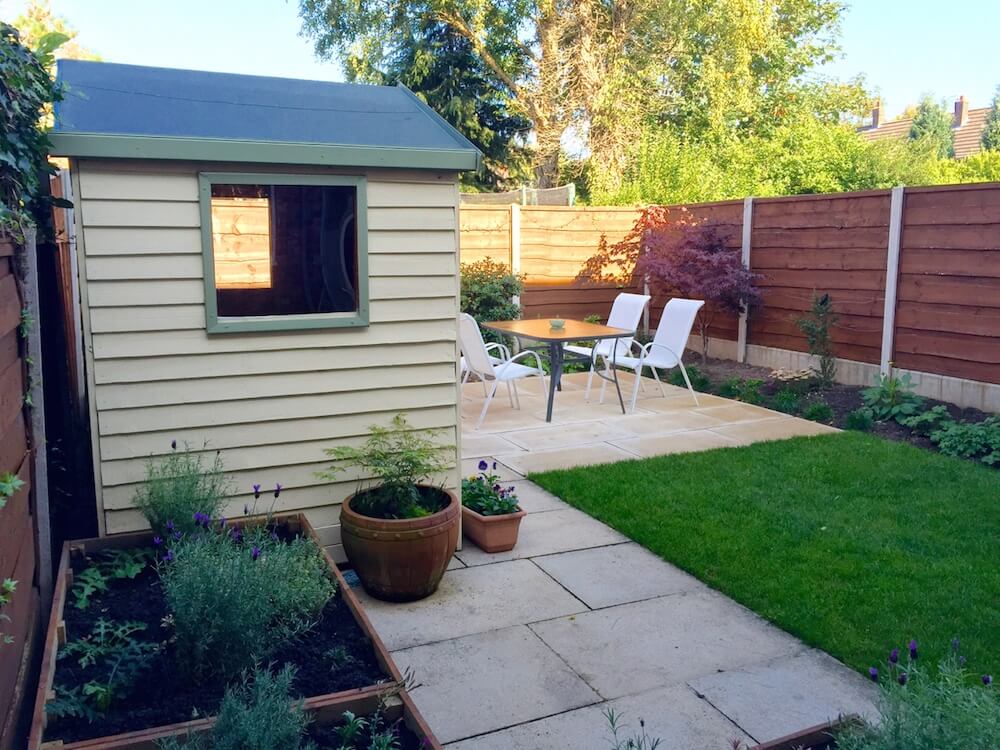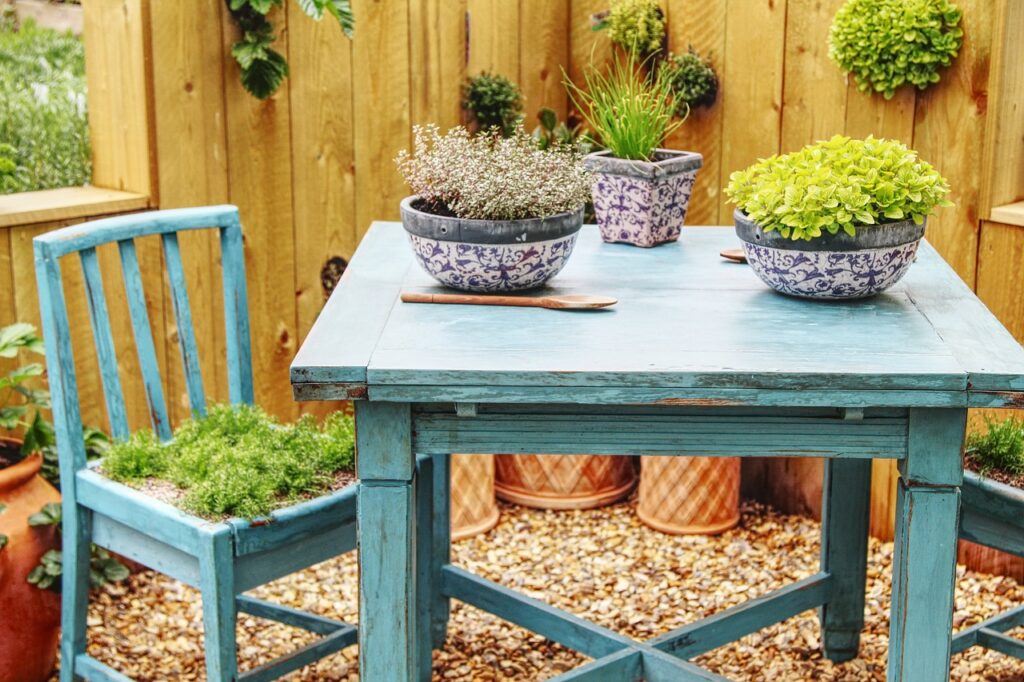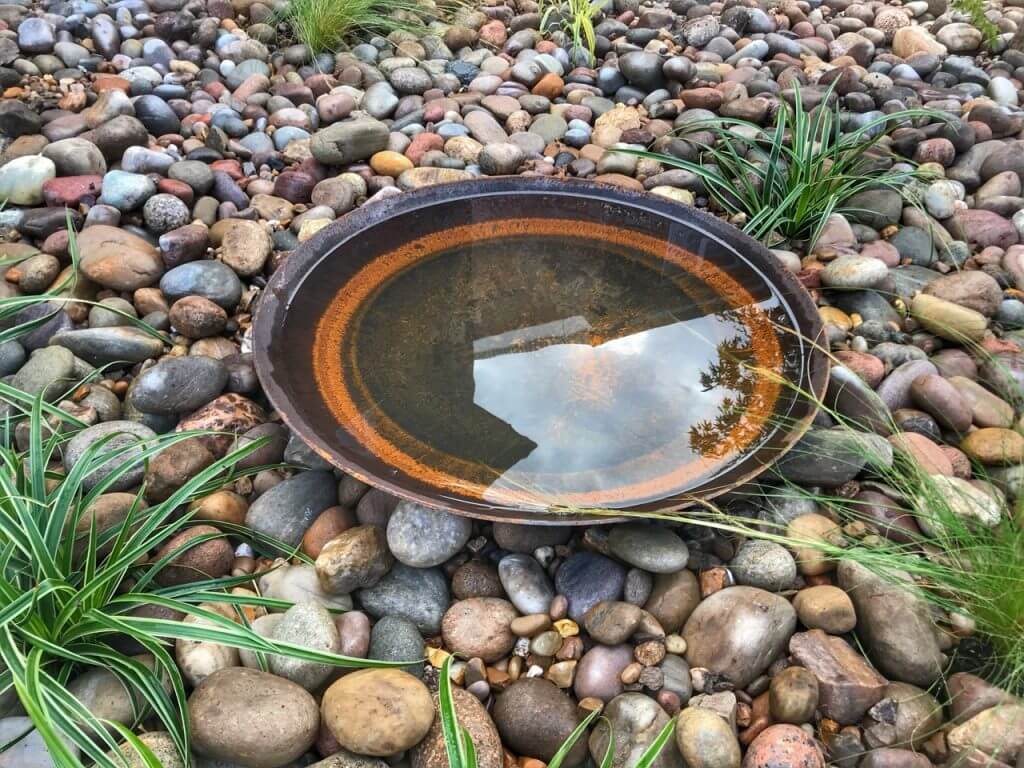How to design a garden on a budget: 10 discount garden hacks!
 Lee Burkhill: Award Winning Designer & BBC 1's Garden Rescue Presenters Official Blog
Lee Burkhill: Award Winning Designer & BBC 1's Garden Rescue Presenters Official Blog

Gardening is a wonderful and fulfilling hobby that allows you to connect with nature, reduce stress, and design a beautiful outdoor space. However, many people believe that creating a beautiful garden requires a hefty budget spending thousands to create a gorgeous garden.

The truth is, with a bit of creativity and careful planning, you can design a stunning garden even on a tight budget. In this article, I'll show you some practical tips and ideas to help you create a flourishing garden without breaking the bank!
This page contains affiliate links for products I use and love. If you take action (i.e. subscribe, make a purchase) after clicking a link, I may earn some gardening commission which helps me keep the Garden Ninja Blog free for all.
Before you start digging or buying plants, planning your garden layout carefully is crucial. Consider the following steps:
a. Measure your garden area: Determine the size and shape of your garden space. This will help you make efficient use of your available space. If you can, draw a scaled sketch of your garden, allowing you to plan out your choices on paper and make your mistakes with a pencil, not a spade!
b. Define your garden's purpose: Decide whether you want a vegetable garden, a flower garden, a relaxing space, or a mix of these elements. Knowing your garden's purpose will guide your design choices. Make sure you design your garden based on how you will use it 90% of the time.
c. Create a rough sketch: Draw a simple sketch of your garden, including the location of pathways, focal points, and plant beds. This will serve as your blueprint for the project. It also means you can check where everything is. If they are in the right place or whether you've got too much going on in your garden design.

Determine how much you're willing to spend on your garden project. Be realistic and set a budget that you can comfortably afford. Your budget should cover plants, materials, and any necessary tools. A budget-conscious garden can still look stunning with the right choices. It's about carefully considering the garden's overall look and using budget-friendly ways to achieve this!
Remember, you don't need to complete the entire garden in one go.
You can divide the garden design into rooms or 'zones' to which you can assign a budget. As a rule of thumb, hard landscaping is the most expensive part of any garden design, second to plants and your time!
One of the most cost-effective ways to fill your garden with beautiful plants is to start from seeds or cuttings. Many flowers, vegetables, and herbs can be easily grown from seeds or propagated from cuttings. This not only saves you money but also allows you to nurture your garden from its very beginning.
Growing from seed also allows you to get to know and understand your plants on a deeper level. Seed sowing saves you money and makes you a far better gardener in the process!
Did you know that you can take my course and learn how to become a Garden Ninja yourself? Click here for details
When purchasing plants, be savvy about where and when you buy them. Buying smaller plug plants can save you a fortune. Don't be fooled into thinking you must buy those expensive, larger-in-bloom flowers from the garden centre. They are expensive as they are in flower and ready to go.
Choose plants that truly suit your garden (by knowing your soil type and garden aspect) by doing your research before you hit the shops.

There are other ways to save money when buying plants:
a. Look for discounts and sales: Garden centres often have sales at the end of the season, where you can find discounted plants and gardening supplies.
b. Consider online options: Online plant nurseries can offer a wide variety of plants at competitive prices. Just be sure to check reviews and ratings before making a purchase.
c. Exchange plants with friends and neighbours: Swap plants with fellow gardeners in your community to diversify your garden without spending money.

Perennial plants are an excellent investment for budget gardeners as they come back each year, unlike annuals, which must be replanted yearly. Perennial plants provide long-term beauty, reduce garden waste and provide excellent value.
Some popular perennial options include ornamental grasses, Rudbeckia, Roses, Shrubs, Lavenders and trees.

Here are some of the advantages of incorporating perennial plants into your outdoor spaces:
a) Longevity: Perennials come back year after year, providing enduring beauty and value to your garden. Unlike annuals, which must be replanted each season, perennials offer a more sustainable and long-term solution.
b) Low Maintenance: Many perennial plants are relatively low maintenance once established. They require less attention and effort compared to annuals, which often need constant replanting and care.
c) Cost-Effective: Although perennial plants may have a slightly higher initial cost compared to annuals, they quickly pay for themselves over time due to their longevity. You won't need to purchase new plants every year.
d) Biodiversity: Perennials contribute to biodiversity by providing a stable habitat for beneficial insects, pollinators, and other wildlife. They help support local ecosystems and promote ecological balance.
e) Water Efficiency: Once established, many perennial plants have deep root systems that make them more drought-resistant. This reduces the need for frequent watering, saving both time and water resources.

f) Erosion Control: Perennials, especially ground-covering varieties, can help control soil erosion by stabilizing the soil with their root systems and dense growth.
g) Year-Round Interest: Perennials often have different stages of growth and bloom throughout the year, providing year-round visual interest in your garden. Some even have attractive foliage during the non-blooming seasons.
h) Naturalizing: Many perennials self-seed or spread gradually, creating naturalized areas in your garden. This can give your garden a more relaxed, natural appearance.
i) Wildlife Attraction: Perennials that produce flowers and seeds often attract a variety of wildlife, including butterflies, bees, birds, and beneficial insects, which can contribute to a healthy and vibrant ecosystem in your garden.

j) Reduced Weeding: Once established, perennials can form dense growth that shades the soil, reducing weed competition. This means less time spent weeding your garden beds.
k) Improved Soil Health: Many perennial plants contribute organic matter to the soil through the decomposition of their leaves and stems. This improves soil structure, fertility, and microbial activity over time.
j) Environmental Benefits: Using perennials reduces the carbon footprint associated with gardening, as they require fewer resources for cultivation and transportation compared to annuals.
If you want to find out which perennial plans are bulletproof then watch my handy guide below, which gives you a mix of different good value plants that slugs will avoid!
Add personality to your garden with DIY garden decor. You can repurpose old items, such as pallets, crates, or even tyres, to create unique planters and garden art.
One of the best ways of doing this is painting your shed to give it a genuine purpose. If your shed dominates the garden and looks awkward, why not use a careful selection of bright or calming paint colours to help it blend in with your planting scheme? This is a great low-cost weekend project to liven up even the most tired gardens.

Mulch not only improves soil health but also helps to retain moisture, reducing the need for constant watering. It helps feed your soil, meaning your plants will thrive, live longer and need less maintenance.
Additionally, composting kitchen scraps and garden waste can provide free nutrient-rich soil for your garden via composting. This allows you to improve your soil at next to no cost by recycling all of your own organic waste!
Invest time in maintenance and care to keep your budget garden looking its best. Regularly weeding, pruning, and mulching can help your garden thrive without costly interventions. Doing a little often lets you keep your garden looking fantastic without needing expensive gardening services or contractors.
Choose the following for low-maintenance gardens:

Incorporating repurposed materials into your garden design can add a unique and eclectic charm to your space. Bringing a function to your outdoor room by repurposing old furniture, giving it a second lease of life. This means that stuff you already have can be turned into a garden feature with very little cost.
Here are some ideas to consider:

A garden water feature can provide a soothing ambience and enhance the overall aesthetic of your garden. Instead of buying an expensive fountain, consider creating your own with affordable materials like a recycled barrel or large ceramic pot. Simply add a small pump, some decorative stones, and aquatic plants for a tranquil DIY water feature that won't break the bank.
A simple metal water bowl below adds calm to this garden all for around £50.

Save money on new plants by dividing and propagating existing ones. Splitting plants doubles your plant stocks and its completely free!
Many perennials, like hostas and irises, can be divided into multiple plants. Carefully dig up the plant, separate the root clumps, and replant them in different areas of your garden. This not only saves money but also helps your garden fill in faster.
One of the best things you can do in a garden is reduce or completely eradicate garden waste going to landfil which immediately saves you and the planet a small fortune!
Composting is not only eco-friendly but also a great way to enrich your garden soil without spending extra money on fertilizers. Collect kitchen scraps like fruit and vegetable peels, coffee grounds, and eggshells to create nutrient-rich compost. Over time, your compost pile will produce valuable organic matter that can be used to improve soil quality.
You can even make a compost bin out of old pallets to save you even more money.
Native plants are not only well-adapted to your region's climate and soil but also tend to require less maintenance and water. By choosing native plants for your garden, you'll reduce the need for costly interventions and create a garden that thrives in harmony with its surroundings.
Take a walk around your local area and see whats working and growing well in other peoples gardens. Take photos and you'll often see the same plants coming up time and time again. These plants clearly like the climate and conditions so you would be wise to consider them in your own garden! This takes the risk out of knowing whether that plant will survive in your own garden.

Have a look at this list of native UK plants to get you started!
Engaging with local gardening communities can provide you with valuable resources, advice, and even free or low-cost plants. Look for local gardening clubs, online forums, or community gardening projects in your area. These networks can be a treasure trove of knowledge, plant swaps, and camaraderie.
Joining gardening groups (or even online ones on Facebook) allows you to meet like minded indivuduals and even have access to plant swaps. More plants for free. It's an excellent way to upskill yourself as you share your knowledge and experience.

Lastly, remember that creating a beautiful garden on a budget may take time. Plants will grow, fill in spaces, and become more lush with each passing season. Be patient and enjoy the journey of watching your garden evolve into the peaceful oasis you envisioned. Patience pays off by allowing you to develop and mature as a gardener so think of it less as time waiting as time evolving!
Make sure you visit my Youtube channel, for more gardening guides. You can also check out my Tweet, Facebook or Instagram for more garden help and tips.
Happy gardening!







JOIN THE NINJAS

Be the first in line for new Guides, Discount codes and Offers